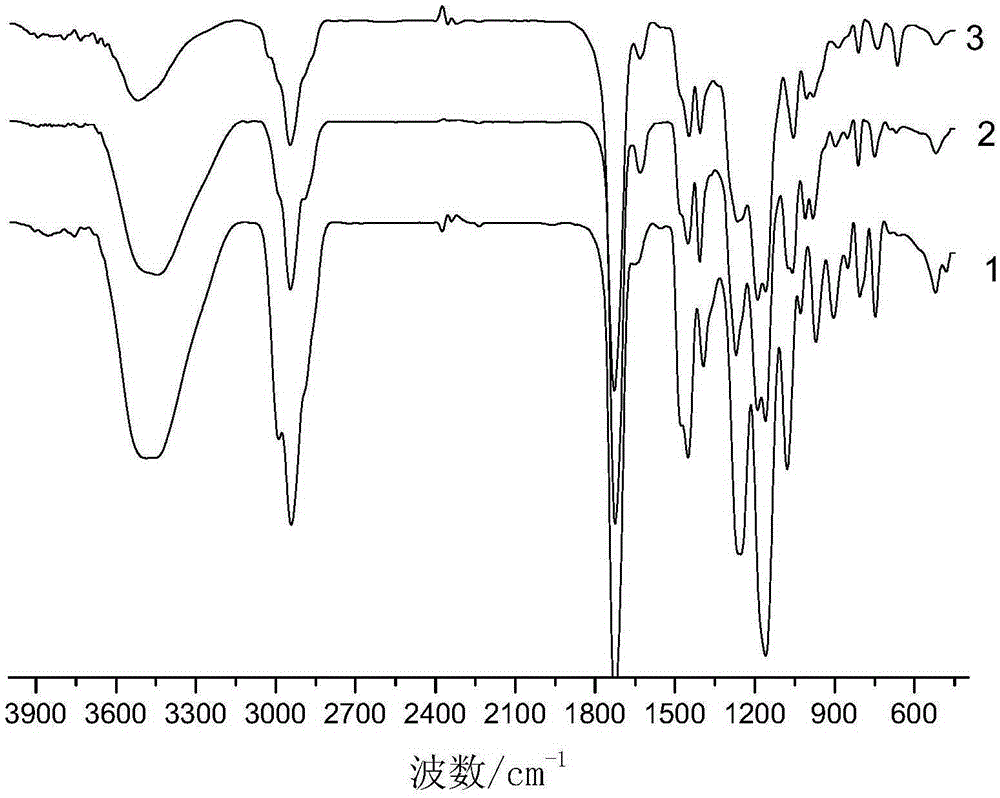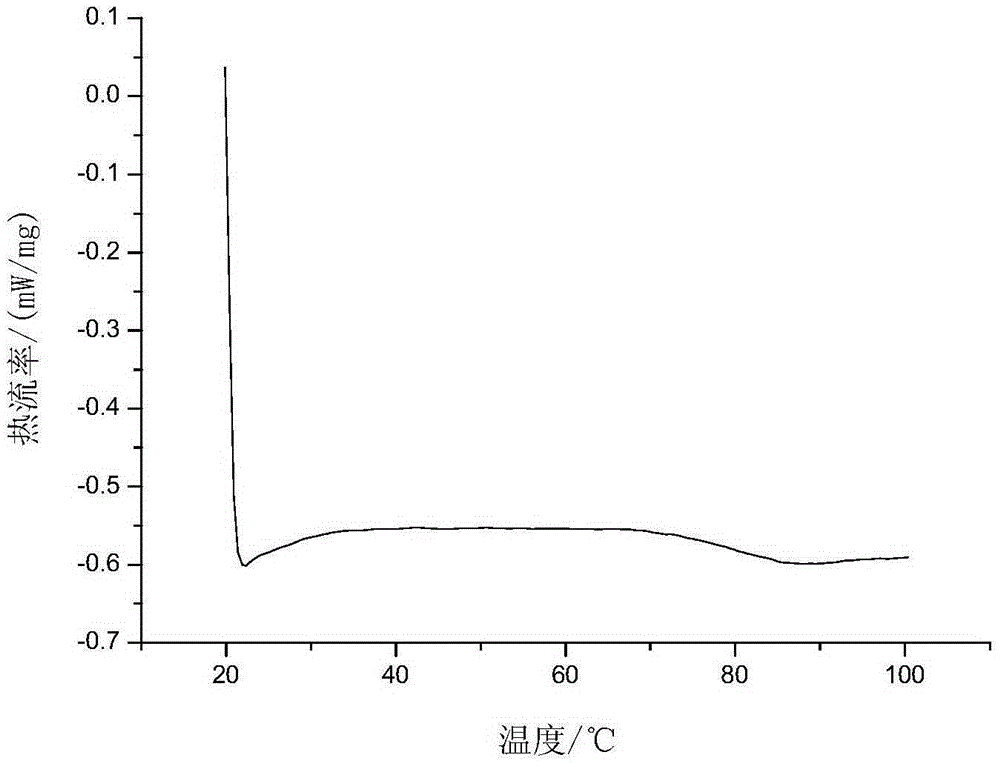Preparation method of alkali-soluble epoxy acrylic uv resin with high temperature resistance and yellowing resistance
A technology of epoxy acrylic acid and epoxy acrylic acid copolymer, applied in application, coating, ink and other directions, can solve the problems of poor light aging resistance and yellowing resistance, restricted application, etc., and achieve enhanced adhesion and high glass transition. Effect of temperature, excellent heat resistance
- Summary
- Abstract
- Description
- Claims
- Application Information
AI Technical Summary
Problems solved by technology
Method used
Image
Examples
Embodiment 1
[0029] A preparation method of an alkali-soluble epoxy acrylic acid UV resin resistant to high temperature and yellowing, comprising the steps of:
[0030] (1) Synthesis of cycloaliphatic epoxy acrylic acid copolymer: first 25 parts of 3,4-epoxycyclohexyl methyl methacrylate, 10 parts of glycidyl methacrylate, 12 parts of hydroxyethyl methacrylate , 1 part of azobisisobutyronitrile, and 0.2 part of isooctyl 3-mercaptopropionate are put into a mixer and stirred evenly to obtain a mixed monomer; then, under the protection of protective gas, the reflux solvent propylene glycol methyl ether Stir and heat the reaction kettle with 53 parts of acetate to 85-100°C, add the above-mentioned mixed monomers dropwise, and complete the dropwise addition within 2 hours. Keep warm for 1.5 hours, and finally raise the temperature to 120-125° C. and reflux for 0.5 hours to obtain a terpolymer solution.
[0031] (2) Acrylic acid modification of cycloaliphatic epoxy acrylic acid copolymer: 100 p...
Embodiment 2
[0038] A preparation method of an alkali-soluble epoxy acrylic acid UV resin resistant to high temperature and yellowing, comprising the steps of:
[0039] (1) Synthesis of cycloaliphatic epoxy acrylic acid copolymer: first, 30 parts of 3,4-epoxycyclohexyl ethyl methacrylate, 12 parts of glycidyl methacrylate, and 10 parts of hydroxypropyl methacrylate , 0.8 part of azobisisobutyronitrile, and 0.5 part of n-dodecylmercaptan are put into a mixer, and stirred evenly to obtain a mixed monomer; Stir and heat the reaction kettle with 48 parts of ester to 85°C, add the above-mentioned mixed monomers dropwise, and complete the dropwise addition within 2 hours. , and finally raise the temperature to 120-125° C. and reflux for 0.5 hour to obtain a terpolymer solution.
[0040] (2) Acrylic acid modification of cycloaliphatic epoxy acrylic acid copolymer: take 100 parts of cycloaliphatic epoxy acrylic acid copolymer synthesized in step (1), adjust the temperature to 100°C, add polymeriz...
Embodiment 3
[0043] A preparation method of an alkali-soluble epoxy acrylic acid UV resin resistant to high temperature and yellowing, comprising the steps of:
[0044] (1) Synthesis of cycloaliphatic epoxy acrylic acid copolymer: first 20 parts of 3,4-epoxycyclohexyl methacrylate, 10 parts of glycidyl methacrylate, 15 parts of hydroxyethyl methacrylate, over Put 0.8 parts of benzoyl oxide and 0.2 parts of isooctyl 3-mercaptopropionate into a mixer, stir evenly to obtain mixed monomers; Stir and heat the reaction kettle with 55 parts of ester (DBE) to 98°C, add the above-mentioned mixed monomers dropwise, and complete the dropwise addition within 2 hours. Keep warm for 1.5 hours, and finally raise the temperature to 120-125° C. and reflux for 0.5 hours to obtain a terpolymer solution.
[0045] (2) Acrylic acid modification of cycloaliphatic epoxy acrylic acid copolymer: get 100 parts of cycloaliphatic epoxy acrylic copolymer synthesized in step (1), adjust the reaction temperature to 90°C...
PUM
| Property | Measurement | Unit |
|---|---|---|
| acid value | aaaaa | aaaaa |
| glass transition temperature | aaaaa | aaaaa |
| glass transition temperature | aaaaa | aaaaa |
Abstract
Description
Claims
Application Information
 Login to View More
Login to View More - R&D
- Intellectual Property
- Life Sciences
- Materials
- Tech Scout
- Unparalleled Data Quality
- Higher Quality Content
- 60% Fewer Hallucinations
Browse by: Latest US Patents, China's latest patents, Technical Efficacy Thesaurus, Application Domain, Technology Topic, Popular Technical Reports.
© 2025 PatSnap. All rights reserved.Legal|Privacy policy|Modern Slavery Act Transparency Statement|Sitemap|About US| Contact US: help@patsnap.com



